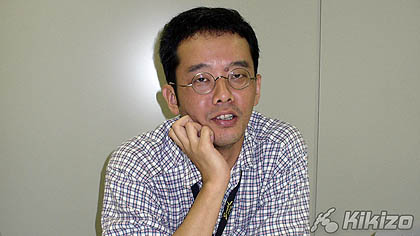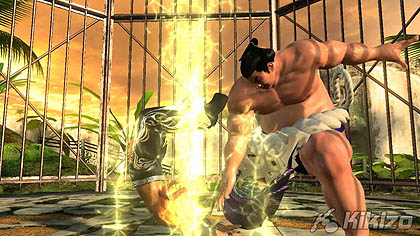Virtua Fighter 5 R: The ONLY Interview
Check out our huge, exclusive interview with SEGA AM2 development boss Makoto Osaki to get the full story on Virtua Fighter 5 Revolution, and various other hot topics.
Page 2
Kikizo: When did the decision to make VF5R come about? How long has the game been in development?
Osaki: Right after VF5, actually. Around the time we were developing revisions A and B for arcades.
Kikizo: So you made the decision to do VF5R long in advance, then. The numerous revisions were just to tide players over until then, we assume?
Osaki: Yes, they were designed to keep the interest of players while we worked on something more substantial.
Kikizo: Is there anything you wanted to implement in VF5R that you were unable to do, due to time or technology limitations?
Osaki: Hmmm, well, One thing I would really liked to have done is introduce some sort of internet versus match between arcades. You know, arcade-to-arcade play. The issue is, of course, the lag. In consumer games, people are satisfied with a small degree of lag being present, but in the arcade environment, that just isn't going to fly. When you play games online at home, when things go badly, you can at least blame it on your bad LAN cable, or something like that. But in arcades, where we charge a hundred yen per game, we can't be making excuses for lack of quality like that.
Kikizo: Would it be possible to do something like that with direct connection LAN cables? Street Fighter IV is doing something similar, but that's linking up machines within the same arcade...
Osaki: What hardware is SF IV using again... is it the PS3 hardware? No, wait, it's the Type-X2, my mistake. Hmmmm... technically, it could be done to link one machine to another, but I think the main issue with that suggestion is that... [in English] "too expensive!" [laughs]. SFIV requires a separate motherboard for each player because of that set up. Right now, VF5 is set up so that 2 players can play the game on a single board and hardware set. If we made operators buy two boards apiece, that would be extremely expensive for them.
Kikizo: On that note, does VF5R run on the same Lindbergh set up that VF5 ran on or have you guys made any upgrades like maybe go for a faster graphics card or newer Core2Duo processor (Lindbergh uses of the shelf parts) or is the hardware the same so that arcades only had to update the software?
Osaki: No, nothing has changed. The hardware's exactly the same, save for an upgraded Nvidia driver for the graphics card. We've also optimized the code to improve the overall speed so for the arcades the upgrade was relatively cheap.
Kikizo: After a long spate of absence, we've finally seen Taka-Arashi's return in VF5R. What made you decide to bring the character back into the series?
Osaki: Because the users wanted him back! [Including Kikizo] We took a survey of the players on VF.NET [the Japanese VF5 ranking and communications system] , and he was a feature requested by many players. We've also got the tools and power now to bring him back in his full glory.
Kikizo: The gameplay of VF3, which Taka was originally designed around, is very different from that of VF5R. Hiroshi Kataoka [President of Sega AM2] also mentioned that Taka didn't make the cut because his development was difficult, around the time VF5 first released. What sort of changes did you make to Taka to adapt him to the gameplay systems of VF5?
Osaki: Well, uh, we should forward this question to Mr. Katagiri [the motion designer]...
Daichi Katagiri: Taka's movement in VF3 was quite slow, compared to the other character. But his slower movements didn't really match the speed increase of Virtua Fighter 5 as compared to VF3. As a result, Taka in VF5 is considerably quicker than his VF3 incarnation... though he's still comparatively slow. We've also got a new sumo stance for him, like Lau and Lei Fei's various stances. Like this! [poses] Oh, and compared to Taka in VF3, his move set has also doubled. The skills he has are a bit less complex than some of the other characters, making him a bit easier to learn than in VF3, where he was considered an expert character.
Osaki: Regarding why he's in the game now as opposed to earlier - it's because of the improvement in development tools, both what we have access to and the experience we have in using them. Back in VF3, we needed to make a lot of original animation movements for Taka-Arashi, like when he'd just "thwump" to the ground following Kage's Koenraku throw. Even not too long ago, we'd think of something and say, "no, it's just not possible for us to do that," but with all the experience and advanced tools we have now, we're able to get a lot more concepts off the ground. Specifically, we used to be using SoftImage 3D for rendering and animation, but now we're using XSI.








 Satoru Iwata Video Interview - the late Nintendo president spoke with Kikizo in 2004 as 'Nintendo Revolution' loomed.
Satoru Iwata Video Interview - the late Nintendo president spoke with Kikizo in 2004 as 'Nintendo Revolution' loomed. Kaz Hirai Video Interview - the first of Kikizo's interviews with the man who went on to become global head of Sony.
Kaz Hirai Video Interview - the first of Kikizo's interviews with the man who went on to become global head of Sony. Ed Fries Video Interview - one of Xbox's founders discusses an epic journey from Excel to Xbox.
Ed Fries Video Interview - one of Xbox's founders discusses an epic journey from Excel to Xbox. Yu Suzuki, the Kikizo Interview - we spend time with one of gaming's most revered creators.
Yu Suzuki, the Kikizo Interview - we spend time with one of gaming's most revered creators. Tetris - The Making of an Icon: Alexey Pajitnov and Henk Rogers reveal the fascinating story behind Tetris
Tetris - The Making of an Icon: Alexey Pajitnov and Henk Rogers reveal the fascinating story behind Tetris Rare founders, Chris and Tim Stamper - their only interview? Genuinely 'rare' sit down with founders of the legendary studio.
Rare founders, Chris and Tim Stamper - their only interview? Genuinely 'rare' sit down with founders of the legendary studio. The History of First-Person Shooters - a retrospective, from Maze War to Modern Warfare
The History of First-Person Shooters - a retrospective, from Maze War to Modern Warfare